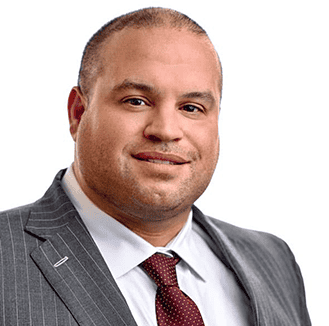
In Maryland and across the United States, many people are asking: Is jail or prison always the best answer to crime? While incarceration has long been the default punishment, it often fails to address the root causes of criminal behavior. Today, Maryland is exploring smarter, fairer, and more effective alternatives to jail and prison.
Our Baltimore criminal defense lawyers are passionate about keeping people out of prison. Let’s look at some of the increasingly popular alternatives to jail and prison.
Why Look for Alternatives? The Problems With Mass Incarceration
Maryland’s prison population tripled between 1980 and 2000 due to “tough-on-crime” policies. These policies led to high incarceration rates, especially among Black Marylanders.
Although Black residents make up about 30% of the state’s population, they account for 71% of those incarcerated in state correctional facilities.
Mass Incarceration Costs
Incarceration remains a costly approach to criminal justice in Maryland. In Fiscal Year 2024, the state allocated approximately $944.8 million to its Department of Public Safety and Correctional Services (DPSCS) for correctional operations—a $32.1 million increase from the previous year.
This budget supports the supervision of an average daily population of over 15,200 incarcerated individuals, along with thousands more on parole and probation. The variable cost per inmate in Maryland for Fiscal Year 2024 was $3,901.85 annually, or about $10.69 per day.
These figures do not include broader costs such as capital expenditures, healthcare, and administrative overheads, which push the total well above that baseline.
Lack of Improved Public Safety
Despite this spending, research and policy reviews show that incarceration does not always improve public safety. The Justice Reinvestment Initiative found that Maryland’s reliance on incarceration—especially for nonviolent offenses—often leads to family disruption, employment barriers, and housing instability for returning citizens.
These consequences can increase the likelihood of reoffending, creating a cycle that is both socially and economically damaging.
For a free legal consultation, call (410) 390-3101
Maryland’s Justice Reinvestment Act (JRA)
In 2016, Maryland passed the Justice Reinvestment Act (SB 1005) to reduce prison populations and reinvest savings into programs that improve public safety. The law:
- Reduced sentences for nonviolent offenses
- Raised the felony theft threshold
- Allowed appeals for mandatory minimum drug sentences
- Expanded parole options for elderly and medically ill inmates
Results So Far
Since the JRA was passed:
- Maryland’s average daily prison population dropped 32% from 22,628 in FY 2016 to 15,424 in FY 2023
- Incarceration for theft and drug offenses fell 75%
- Recidivism (reoffending) dropped from 37.1% in FY 2016 to 31.6% in FY 2019
Diversion Programs
Diversion programs redirect people away from jail and into treatment or community services. These programs are especially helpful for people with mental health issues or substance use disorders.
Examples in Maryland include:
Law Enforcement Assisted Diversion (LEAD) Program
The LEAD Program (Law Enforcement Assisted Diversion) is a pre-arrest diversion initiative designed to redirect individuals engaged in low-level criminal activity—often driven by behavioral health issues—into supportive services rather than jail.
Police officers use their discretion at the point of arrest to refer eligible individuals to a trauma-informed, intensive case management program. Instead of entering the criminal justice system, participants receive personalized support that may include:
- Substance use treatment
- Mental health services
- Housing assistance
- Employment support
Eligibility:
- Adults (18+)
- Offenses such as misdemeanor theft, drug possession, prostitution, and low-level burglary
- “Nuisance crimes” like rogue and vagabond behavior
Maryland Implementation:
LEAD is active in several Maryland jurisdictions, including:
- Carroll County
- Howard County
- Baltimore City
- Frederick County
Collaborators include local health departments, public defenders, parole and probation offices, and police departments.
Impact:
Studies show LEAD participants are significantly less likely to reoffend. Nationally, LEAD has reduced recidivism by 58% and saved an average of $3,000 per participant compared to traditional prosecution.
Community Mediation Programs in Maryland
Community Mediation Maryland (CMM) coordinates a statewide network of mediation centers that offer free or low-cost conflict resolution services. These programs aim to resolve disputes before they escalate into criminal charges or court cases.
Services Offered:
- Re-entry mediation for incarcerated individuals preparing to return to their communities
- School attendance mediation to address truancy and behavioral issues
- Parenting plan mediation for custody and visitation disputes
- Police complaint mediation to foster dialogue between law enforcement and residents
Key Principles:
- Voluntary participation
- Confidentiality (protected under the Maryland Mediation Confidentiality Act)
- Non-judgmental facilitation
- Empowerment of participants to make their own decisions
Locations:
CMM supports 10+ community mediation centers across Maryland, including:
- Baltimore Community Mediation Center
- Carroll County Community Mediation Center
- Conflict Resolution Center of Baltimore County
Benefits:
- Reduces court caseloads
- Builds community trust
- Offers culturally responsive and accessible services
Teen Court and Restorative Boards
Teen Court is a peer-led diversion program for first-time youth offenders charged with nonviolent misdemeanors. Instead of going through formal juvenile court, participants appear before a jury of their peers, who determine appropriate consequences.
Goals:
- Promote accountability
- Educate youth about the justice system
- Prevent future offenses
- Avoid the stigma of a juvenile record
Common Cases:
- Shoplifting
- Disorderly conduct
- Vandalism
- Underage alcohol possession
Restorative Boards:
These are community panels that meet with youth offenders to discuss the impact of their actions and agree on restitution plans. They emphasize:
- Repairing harm
- Rebuilding relationships
- Reintegration into the community
Maryland Teen Court Association:
This nonprofit oversees Teen Court programs across the state, including:
- Baltimore City
- St. Mary’s County
- Anne Arundel County
Teen Courts have been shown to reduce recidivism and improve youth decision-making. However, funding challenges have led to the closure of some programs, such as Wicomico County’s Teen Court in 2019.
Click to contact our lawyers today
Probation and Parole
Instead of serving time in jail, individuals may be placed on probation or parole, allowing them to live in the community under supervision.
- Maryland supervises over 50,000 individuals through its Division of Parole and Probation.
- Most people on supervision complete their sentences successfully, especially those assessed as low risk.
Complete a Free Case Evaluation form now
House Arrest and Electronic Monitoring
House arrest, also known as home detention, allows individuals to serve their sentence at home. They may wear an electronic ankle bracelet and follow strict rules about where they can go.
- This option is often used for nonviolent offenses.
- It saves money and keeps people connected to their families and jobs.
Community Service
Instead of jail, courts may order community service, where individuals give back by helping with local projects. This helps build responsibility and benefits the community.
Mental Health and Substance Use Treatment
Many people in jail struggle with addiction or mental illness. Maryland is expanding access to trauma-informed care, drug treatment, and behavioral health services as alternatives to incarceration.
Special Programs for Youth and Vulnerable Populations
Emerging Adults Program
Maryland is piloting a program for young adults that focuses on community building, education, and intensive support to help them succeed after release.
Second Look Laws
These laws allow judges to review and reduce sentences for people who have served long terms and no longer pose a threat. Maryland is expanding access to these laws for elderly and rehabilitated individuals.
Funding and Support
Performance Incentive Grant Fund
Maryland created a fund to support alternatives to incarceration. In FY 2024, the state awarded $16.5 million to programs that:
- Help people reenter society
- Provide mental health and addiction treatment
- Support victims
- Offer education and job training
Challenges and Opportunities
Racial Disparities
Maryland still faces serious racial disparities in its justice system. Black Marylanders are incarcerated at much higher rates than white residents. Reform efforts aim to address these gaps by changing how police, prosecutors, and judges make decisions.
Public Support
A national survey found that 85% of Americans support making rehabilitation the goal of the criminal justice system instead of punishment.
Conclusion: A Smarter Path Forward
Maryland is making progress in reducing incarceration and offering better alternatives. These programs help people rebuild their lives, save taxpayer money, and make communities safer.
Instead of relying only on jail and prison, Maryland is investing in diversion, rehabilitation, and community support. These changes reflect a growing belief that justice should be fair, effective, and focused on helping people succeed.
Criminal Lawyers in Maryland
For individuals facing criminal charges or seeking alternatives to incarceration, legal guidance is essential. The Bishop Law Group is committed to helping clients navigate Maryland’s justice system with compassion and expertise. To learn more or schedule a consultation, contact us today.
Call or text (410) 390-3101 or complete a Free Case Evaluation form





